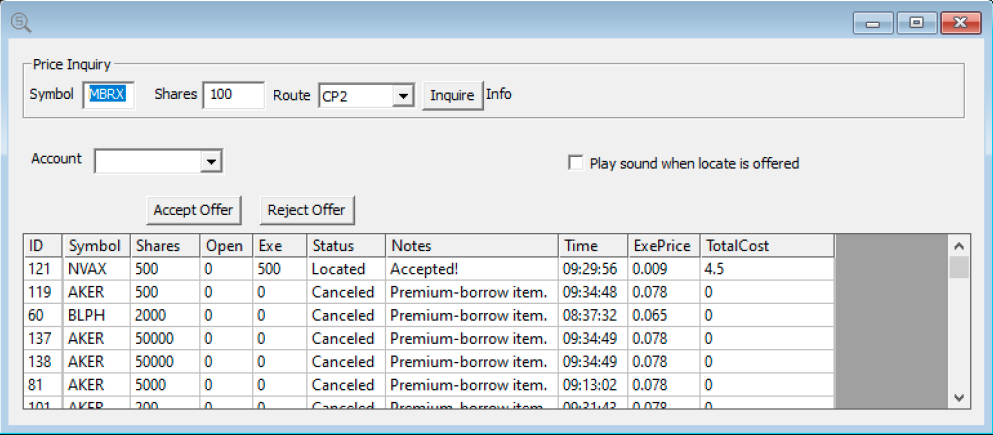Understanding Locates
Whenever you short sell a stock, you are borrowing shares to sell and re-purchase at a later point (covering). Stocks can be classified as either “easy-to-borrow” or “locate required” based on demand and availability.
If a stock is easy-to-borrow, our clearing firm has access to inventory that is ready to lend. If a stock is classified as “locate required”, you will need to locate shares to borrow before you can initiate a short position.

The concept is best illustrated with a real-world example.
If you go to the library looking for a popular book, the library will likely have a copy that you can borrow. If you are looking for a rare book, the library may need to reach out to other branches or specialty dealers to secure a copy.
What You Need to Know
When a stock is marked as “locate required”, shares need to be located before you can initiate a short position.
Understanding Locate Fees
While easy-to-borrow stocks can be sold short for little-to-no cost, stocks that require locates have some additional fees associated.
First, there is generally a higher interest rate charged on the borrowed shares.
Second, there is a per-share fee associated with securing the locates.
The interest rate is applied to the period in which you hold a position. The locate fee is a flat per-share fee that is charged when you accept the borrowed shares (whether or not you initiate a position).
For example, if you locate and secure 1,000 shares of a stock with a $0.05/share locate fee, you will be charged $50.
How to Secure Locates
Locates can be secured directly within the DAS Trader Pro platform. Please review the information below to learn how to secure locates.
Integrated Short Locate Tool
You can access the Short Locate Tool directly within the DAS Trader Pro platform.
Simply enter the ticker you are trying to locate and the number of shares you’d like to borrow and the Short Locate Tool will check for availability.
If shares are available to locate, you will be shown the locate fee and you can choose whether or not you’d like to accept the locate.
Short Locate Tool FAQ
Below you can find answers to the most common questions about the integrated Short Locate Tool.
What is the cost to use the Short Locate Tool?
The Short Locate Tool is free to use. You will only be charged if you choose to accept a locate (STATUS = “Located” and the NOTES = “Accepted”).
When can I access the Short Locate Tool?
The Short Short Locate Tool is available from 4AM to 8PM EST.
When are these fees deducted from my account?
These fees will be deducted on the day following the initial locate activity. You will see this line item on the “Account Activity” page under the label Locate fees.
Common Questions About Locates
Below you can find answers to the most common questions about the integrated Short Locate Tool.
When is the best time to secure locates?
There are a few factors that can help you decide the best time to secure locates.
The most obvious factor is your personal trading needs. You can secure locates when you are preparing to initiate a short position in a stock that is going to require a locate.
In certain cases, locates are readily available and you can secure them when you are ready to place a trade. In other cases, locates are limited and it pays to be early. Many traders will secure locates early in the morning to ensure that they have access to the shares they need to short.
You can check the available supply of locates for a specific stock using the Short Locate Tool.
Where can I track my locates?
You can track your locates in the Short Locate Tool within DAS Trader Pro.
Will I be charged for locates if I don’t end up executing a trade?
Yes, you will be charged when you accept a locate, regardless of whether or not you execute a trade.
What determines locate fees?
Locate fees are generally determined by available supply. When supply is limited, locates will generally be more expensive.

